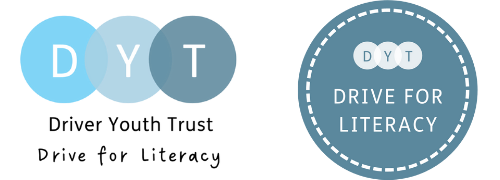#WorldBookDay – Book Review ‘Wonder’, by R. J. Palacio
27/2/2018
Wonder, by R. J. Palacio (Author, Illustrator)
As part of our celebrations for World Book Day, we are thinking about the theme of disability within children’s literature. It’s great that there is a growing number of books with either disabled characters or which tackle issues around disability, for younger and older readers. Today, we have chosen to review the phenomenally popular Wonder, by R.J. Palacio, published in 2013 and released at the cinema in film form last November.
It is the story of August (Auggie) Pullman and his enrolment in middle school. The story follows his trials and tribulations during the school year through the eyes of multiple characters, Auggie, his sister and his friends. In many ways, Auggie is just another kid starting a new school; what makes his experience different is that Auggie has never been to school before.
Unlike most children, Auggie is disabled. He has a genetic abnormality that resulted in facial disfigurement. Thanks to his disfigurement, and the multiple surgeries that followed, to give him a functioning face, Auggie has been home educated, up until the start of the book, by his mom. Understandably, he is nervous about attending school – what he might think about it and what his classmates might think about him.
This book is a New York Times best-seller, garnering rave reviews as a touching and engaging coming of age story and it is indeed an easy, page-turning read. The difficulties that many students face, entering the middle years of their education, are well drawn. No doubt many teachers will want to use this book in class, especially as it is a tale told from multiple viewpoints.
I, like many readers, was keen to find out how Auggie had got on by the end of the year; however, I must admit, I closed the book, not with a shout of acclaim, but with a small a sigh of disappointment. While there is much to celebrate, I found myself with some uncomfortable, unanswered questions about Auggie as a disabled character which you, if you are using this book as a teaching resource, may wish to explore with your class, or seek to answer for yourself.
- In a book which is ostensibly about disability, with a disabled character as the hero, is it acceptable for characters to use words such as ‘moron’ and ‘retarded’ as insults towards other characters?
- Why does Auggie react so negatively to the idea of an ‘inclusion school’?
- Prize-givings are a big part of school life. Should Auggie get a prize, and if so, what for?
- Is the portrayal of Auggie a realistic portrayal of a disabled character? Or, to put it another way, are disabled people always bright, intelligent, kind and friendly, with only their fear to hold them back? (It is interesting to compare Auggie with other disabled characters in literature: Long John Silver from Treasure Island, Boo Radley from To Kill a Mockingbird, Percy Jackson from Percy Jackson and the Lightening Thief, Gerald from Giraffes Can’t Dance and even Harry Potter are great examples to discuss with children of all ages.)
- Is the relationship between Auggie and his sister realistic? Does it matter? Does anyone in your life have a sibling who has taken up, through no fault of their own, the majority of their parents’ time?
For a book that seemed, on the surface, to do much to challenge pre-conceptions about disabled people, and children with facial disfigurement in particular, in the end, I was left with more questions relating to the portrayal of disabled people in literature than answers. I’d be interested to hear what children who have read this book think in answer to these questions.
If you are interested in exploring the theme of disability within children’s literature, check out our great resource, created in partnership with Caroline Haigh of Hambleton CE VA Primary School, North Yorkshire, or book our workshop ‘Ways of Being Human’, part of our Drive for Literacy Programme, at your school.
For more details or to sign up for the DfL programme please contact us at info@driveryouthtrust.com

